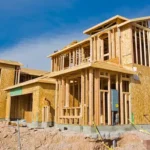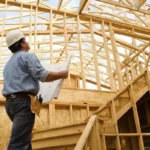
VA Construction Loans: A Guide for Veterans
Are you an eligible veteran, active-duty service member, or qualifying military spouse wondering if you can use a VA loan to purchase land and build a home?
The answer is yes.
VA construction loans offer flexible credit requirements, no private mortgage insurance (PMI), and the potential for zero down payment—all of which can make your dream of owning a custom-built home far more attainable.
In this comprehensive guide, you’ll learn exactly how VA construction loans work, the steps involved in buying land with a VA loan, up-to-date housing market data for 2025, and frequently asked questions to help you get started.
Why Choose a VA Construction Loan in 2025?
A VA Home Loan is a mortgage backed by the U.S. Department of Veterans Affairs, designed to provide affordable and accessible homeownership opportunities for those who served. While most veterans think of using a VA loan to purchase an existing home, it can be a powerful tool for building a custom home.
-
No Down Payment (For Most Borrowers): This is a HUGE advantage. Save your hard-earned money. Many home buyers struggle with the initial down payment cost.
-
Competitive Interest Rates: Often lower than conventional and even FHA loans. This saves veterans money over the life of the loan.
-
No Private Mortgage Insurance (PMI): Save hundreds of dollars each month. PMI can add significantly to monthly mortgage payments.
-
Flexible Credit Requirements: VA loans are more forgiving than conventional loans, helping more veterans qualify. A lower credit score might be accepted compared to other types of loans.
-
Location, Location, Location: Build where you want to live! Don’t be limited by existing housing stock.
-
Customize Your Dream Home: Design your own dream home from the ground up. Choose your layout, finishes, and features.
-
Contingency Plans: Make sure you have a plan in place if there are unforeseen challenges.
VA Loan Eligibility: Do You Qualify?
To be eligible for a VA construction loan, you typically need to meet one of the following requirements:
-
Veterans: Served a minimum period of active duty and received an honorable discharge. Specific service requirements vary depending on when you served.
-
Active-Duty Service Members: Currently serving on active duty.
-
Qualifying Military Spouses: Spouses of veterans who died in service or from a service-connected disability may also be eligible.
-
Certificate of Eligibility (COE): You’ll need to obtain a COE from the VA to verify your eligibility. You can do this in the VA portal.
Examples:
-
Example 1: Veteran with 10+ years of service: Sergeant Johnson served honorably in the Army for 12 years, including a tour in Iraq. He is eligible for a VA loan.
-
Example 2: Active Duty Air Force Member: Airman First Class Ramirez is currently serving on active duty. She is eligible for a VA loan.
-
Example 3: Surviving Spouse: Mrs. Smith is the widow of a veteran who died in service. She meets the criteria for a qualifying spouse.
VA Loan for Land Purchase: The Key to Building Your Dream
Can you use a VA loan to buy land? Yes, absolutely!
But there’s a catch: you must have concrete plans to build a home on that land immediately. This means you can’t use a VA loan for land speculation or investment purposes. A VA construction-to-permanent loan specifically allows you to finance both the land acquisition and the cost of building your new home. This is an excellent option if you want to customize every detail of your living space.
How a VA Construction-to-Permanent Loan Works: Step-by-Step
This loan type streamlines the process by rolling both the land purchase and the construction phase into a single mortgage that converts to a permanent VA loan upon completion.
-
Pre-Approval: The Foundation – Obtain your Certificate of Eligibility (COE) and get pre-approved by a VA-approved lender. This step is crucial to know how much you can afford. (Link to internal article “Obtain Certificate of Eligibility”).
-
Documentation Needed: Be prepared to provide proof of income, assets, and debts. Lenders will typically require W-2s, pay stubs, bank statements, and credit reports.
-
Improving Your Chances: Check your credit score and address any errors or negative items. Lower your debt-to-income ratio by paying down debts. Gather all required documents in advance.
-
-
Find a VA-Approved Builder: Your Partner – Your builder MUST be VA-registered and meet all VA construction requirements. This ensures quality and compliance.
-
Why VA Approval Matters: VA-approved builders have demonstrated their ability to meet VA construction standards and provide a warranty on their work. This protects you from shoddy construction or defects.
-
Researching Builders: Check online reviews, ask for references, and verify the builder’s license and insurance.
-
Questions to Ask: Ask the builder about their experience with VA construction loans, their construction timeline, and their warranty policy.
-
-
Loan Application: Details Matter – The loan covers both the land purchase and the complete construction costs, as agreed upon by you, the builder, and the lender.
-
Completing the Application: Provide accurate and complete information on the application form. Be prepared to answer detailed questions about your income, assets, and debts.
-
Working with Your Lender: Maintain open communication with your lender throughout the application process. Respond promptly to their requests for information.
-
-
Appraisal & Underwriting: Scrutiny is Good – The lender rigorously assesses your building plans, the land’s value, and your financial situation. Expect a thorough process.
-
Appraisal: An independent appraiser will assess the value of the land and the proposed construction project.
-
Underwriting: The lender will review your credit history, income, and assets to determine your ability to repay the loan.
-
What Lenders Look For: Lenders want to see a stable income, a good credit score, and a reasonable debt-to-income ratio.
-
-
Construction Phase: Gradual Funding – Funds are released in draws as the builder completes agreed-upon milestones. This protects your investment and ensures quality control.
-
Draw Schedule: The draw schedule outlines when funds will be released to the builder based on the completion of specific construction milestones (e.g., foundation, framing, plumbing, electrical).
-
Inspections: The lender will typically conduct inspections at each milestone to verify that the work has been completed to their satisfaction.
-
Managing the Draw Schedule: Stay in close communication with your lender and builder throughout the construction phase to ensure that funds are released on time.
-
-
Final Inspection & Conversion: The Home Stretch – Once construction is finished and inspected, the loan automatically converts into a traditional VA mortgage.
-
Final Inspection: The lender will conduct a final inspection to ensure that the construction has been completed according to the agreed-upon plans and specifications.
-
Loan Conversion: Once the final inspection is complete, the construction loan will convert into a permanent VA mortgage.
-
Navigating the 2025 Housing Market: Why Build Instead of Buy?
The 2025 housing market is still competitive. With rising home prices and limited inventory, many veterans are choosing to build.
VA Loan vs. Other Mortgage Rates (2025 – Example)
| Loan Type | Interest Rate | APR |
| VA 30-Year Fixed | 5.75% | 6.00% |
| Conventional 30-Year Fixed | 6.25% | 6.50% |
| FHA 30-Year Fixed | 6.00% | 6.30% |
Disclaimer: Rates are examples only and subject to change. Consult with lenders for current VA rates.
VA Loan Limits in 2025: What You Need to Know
Good news! As of 2025, VA loans technically have no loan limits for borrowers who have full entitlement. However, lenders might still impose limits based on your credit and the location of your project.
| Area Type | Typical Loan Limit |
| Standard Counties | $850,000 |
| High-Cost Areas | $1,250,000 |
Exceeding these limits might require a down payment.
Challenges to Be Aware Of (and How to Overcome Them!)
While VA Construction loans are fantastic, be prepared for these hurdles:
-
Finding a VA-Approved Builder: Not all builders are VA-approved. Do your research! This is because VA-approval requires additional paperwork and compliance, which some builders find burdensome. Contact local VA offices for lists of builders.
-
Longer Loan Processing: Expect additional approvals. Be patient! Construction loans require additional due diligence to assess the feasibility of the building project. This can add time to the processing.
-
Potential Delays: Weather, supply chain issues, and labor shortages can happen. Build a contingency plan into your budget and timeline. Consider adding a buffer to the construction timeline and having access to emergency funding.
-
Appraisal Challenges: If the appraisal come in lower than expected, especially if building in a developing area. Research comparable land values and building costs.
Financing Land Improvements:
In some cases, the land you purchase may require improvements before construction can begin. This could include clearing trees, grading the land, or installing utilities. You might be able to finance these improvements as part of your VA construction loan, but it’s important to discuss this with your lender upfront. Alternatively, you could explore other financing options, such as a personal loan or a home equity line of credit.
Case Study:
John, a Marine Corps veteran, wanted to build a custom home on a plot of land he inherited. He used a VA construction loan to finance both the land improvements and the construction of his dream home. He had a few challenges related to the inspection process, but overcame them by staying communicative.
Expert Insight:
“VA construction loans are a powerful way for veterans to build their dream homes, but partnering with an experienced lender and builder is essential to minimize delays. Also, be realistic about your budget and timeline. It is better to be conservative and overestimate than underestimate. Remember you will likely be living elsewhere while the home is being built, so factor in rent.” – Emily Peterson, VP of Lending at Valor Financial.
Future Trends in VA Construction Loans:
-
Increased Use of Technology: Expect to see more lenders and builders using technology to streamline the construction loan process, such as online applications, virtual inspections, and project management software.
-
Sustainable Building Practices: As environmental concerns grow, expect to see more veterans interested in building energy-efficient and sustainable homes.
-
Adaptable Homes: Many veterans look forward to homes that can be easily modified and adapted as the veteran ages.
The Role of Technology:
Technology is already transforming the construction industry, and VA construction loans are no exception. Virtual reality walkthroughs allow borrowers to visualize their future home before construction begins. Drone surveying can provide accurate land assessments. Project management software can help track construction progress and manage budgets. These tools can help make the building process more efficient and transparent.
Avoiding Scams:
Unfortunately, there are scams that target veterans seeking VA loans. Be cautious of anyone who:
-
Asks you to pay upfront fees before providing any services.
-
Pressures you to sign loan documents without reading them carefully.
-
Guarantees you approval, regardless of your credit history.
Tips for Avoiding Scams:
-
Work with reputable lenders and builders.
-
Get everything in writing.
-
Read all loan documents carefully.
-
Never pay upfront fees.
-
Contact the VA if you suspect a scam.
Frequently Asked Questions
-
Can I use a VA loan just to buy land? No. It must be for a construction project.
-
Do I need a down payment? Usually no, as long as you stay within lender limits and have full entitlement.
-
How long does it take to build? Typically 6-12 months.
-
How do I find a VA-approved builder? Check the VA website or ask your lender. (Duplicate link to resource above)
-
What if construction is delayed? Work with your lender and builder to adjust the draw schedule.
-
Can I build a multi-unit property? Yes, up to four units, if one is your primary residence.
-
What if the appraisal is lower than the contract price? Negotiate with the seller, increase your down payment, or find a different property.
-
Can I use a VA loan to renovate an existing home? Yes, but that’s a different type of VA loan.
-
What are the closing costs for a VA construction loan? Closing costs can vary, but they typically include appraisal fees, title insurance, and recording fees.
-
What is the VA funding fee? A fee paid to the VA to help cover the cost of the loan program. The fee varies depending on the type of loan and your service history.
The Bottom Line
A VA construction loan in 2025 can make your dream of building a custom home a reality.
Don’t wait! Get started today by getting pre-approved and finding a qualified VA-approved builder. Consider consulting legal counsel. Understand that there is always a risk of delays. Know your rights. Your dream home is closer than you think!









